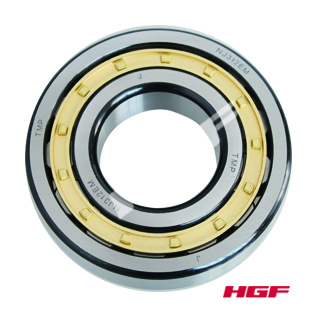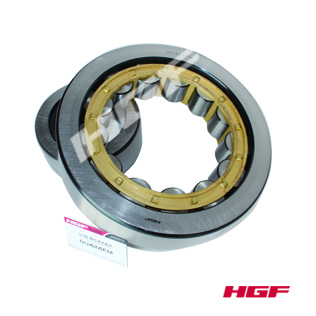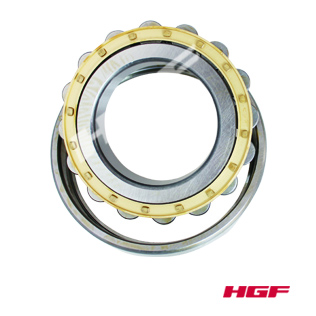Ultrasonic vibration assisted grinding applications in machining of bearing
Ultrasonic vibration assisted grinding applications in machining of bearing
With traditional grinding processing technology bearings, it was found that the surface roughness of the finished product is often less than expected, but also accompanied by the occurrence of surface burns. Even under ideal parameters further refined when there are still poor and machine stability of qualified products low, which seriously restricted the production efficiency of the bearing. The use of ultrasonic vibration assisted grinding it can solve the problem to some extent. Many people do not understand this ultrasonic vibration assisted grinding technology, let us through this article to find out.
What is the ultrasonic vibration assisted grinding
Ultrasonic vibration assisted grinding process is in the conventional grinding process, and applying ultrasonic vibration applied to the workpiece or grinding wheel. This process can reduce the surface roughness value, improve the surface quality, but also can serve to reduce the grinding force, improve the cutting system stability, reduce grinding heat generation, reduce or avoid surface burns and so on. Ultrasonic assisted grinding bearings, can greatly improve the processing effect, improve product yields and productivity.
Improve the surface quality analysis
Unlike traditional grinding, ultrasonic vibration in the axial direction of the auxiliary grinding process, in the axial direction of the ultrasonic wave is applied to a regular abrasive wheel on a high-frequency vibration controllable, so that movement of the abrasive grains except originally containing around the central axis of the wheel and the rotational movement of the wheel along the tangential direction than uniform translation, the addition of high-frequency components out of a movement of the vibration along the axial direction of the grinding wheel.
It appears this sub-motion, changing the motion characteristics of abrasive grinding process, so that the processing speed or grinding feed rate and other parameters according to some law changes the trajectory of the abrasive becomes sinusoidal. Thus, the actual cutting length with respect to conventional grinding abrasive grains increased, the actual cutting width will be wider, the amount of material removal is increased, the productivity can be improved. Adjacent abrasive trajectories interfere with each other, so that the surface becomes distributed network structure, thus changing the formation mechanism of grinding the workpiece surface to improve the surface quality of the workpiece.
Reduce the grinding force Theoretical Analysis
In the grinding process, the grinding arc is one of the important parameters, the size of its grinding force there is a direct link. Since the introduction of ultrasonic vibrations in the grinding infeed depth, table feed rate, wheel speed and other parameters remain unchanged, the axial ultrasonic vibration assisted grinding of the long arc of motion is much larger than ordinary grinding motion arc , axial cross-sectional area of the chip is much smaller than conventional grinding. This will bring two results: the average abrasive grit grinding force is smaller than the traditional grinding and can be finer than conventional grinding chips.
In the absence of applying ultrasonic vibration, abrasive friction by collinear direction of its sliding velocity direction. And when the ultrasonic vibration is applied, the abrasive grains and the workpiece relative sliding velocity and direction of the grinding wheel in the tangential direction to produce a periodic change of the angle, and therefore the tangential direction of the grinding wheel abrasive friction force will also change periodically, and not less than ultrasonic vibration is applied to the case.
In the processing, when the cutting speed reaches a certain level or grinding, cutting or grinding force increases as the speed is reduced. This theory makes high-speed processing technology to shape and develop. Axial ultrasonic grinding process, due to the introduction of ultrasonic vibration, resulting in relative speed of the workpiece and the abrasive particles has changed, much higher than ordinary relative velocity when grinding. Thus, according to the relationship between the high-speed machining and grinding force grinding speed, but also it can be concluded: ultrasonic vibration assisted grinding it has a smaller than conventional grinding grinding force. This helps suppress the generation of grinding heat dissipation, thus effectively solve the problem of its surface burns.
In the ultrasonic vibration assisted grinding, since the introduction of ultrasonic vibrations, not only reduces the surface roughness to improve the surface quality of the workpiece, but also reduces the grinding force to avoid burns. Ultrasonic vibration assisted grinding provides a new and efficient way of processing bearing processing.
- 2016.03.03Industry News£ºReducer bearing a..
- 2016.03.03Industry News£ºWithout knowing t..
- 2016.03.03Industry News£ºUltrasonic vibrat..
- 2016.02.17Industry News£ºHigh-speed railwa..
- 2016.01.30Industry News£ºLow vibration bea..












